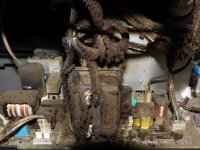GeekMan1222
Grand Master
Leave the machine off for a few hours or half a day what ever you are most comfortable with.
When you remove the chassis circuit board from the frame just take care not to have your fingers touching the bottom of the board anywhere near the large capacitors. Over time the current should bleed off to safe levels but better safe than sorry
The neck board on the back of the tube is directly connected to the chassis. You need to remove this as well from the CRT tube as well they come out together.
Take some photos of how the colored wires plug into the chassis from the CRT's Yoke. One pair is for vertical and one is for horizontal. You also need to remove the degauss wire as well. You need to remove those before the chassis can come out. That way you wont have to worry about messing with them again when you put the monitor back together and you reversed them some how.
It will make more sense as you take the chassis out though. Everything needs to be disconnected from the chassis except the flyback anode cup and the neck board basically.
When you remove the chassis circuit board from the frame just take care not to have your fingers touching the bottom of the board anywhere near the large capacitors. Over time the current should bleed off to safe levels but better safe than sorry

The neck board on the back of the tube is directly connected to the chassis. You need to remove this as well from the CRT tube as well they come out together.
Take some photos of how the colored wires plug into the chassis from the CRT's Yoke. One pair is for vertical and one is for horizontal. You also need to remove the degauss wire as well. You need to remove those before the chassis can come out. That way you wont have to worry about messing with them again when you put the monitor back together and you reversed them some how.
It will make more sense as you take the chassis out though. Everything needs to be disconnected from the chassis except the flyback anode cup and the neck board basically.


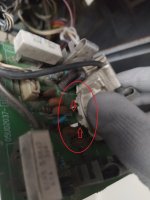
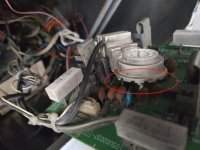
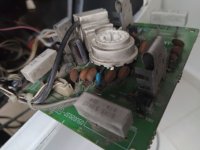
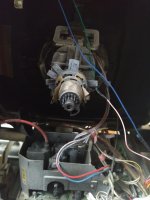
 , and as expected is fully covered with gunk and dust.
, and as expected is fully covered with gunk and dust.
